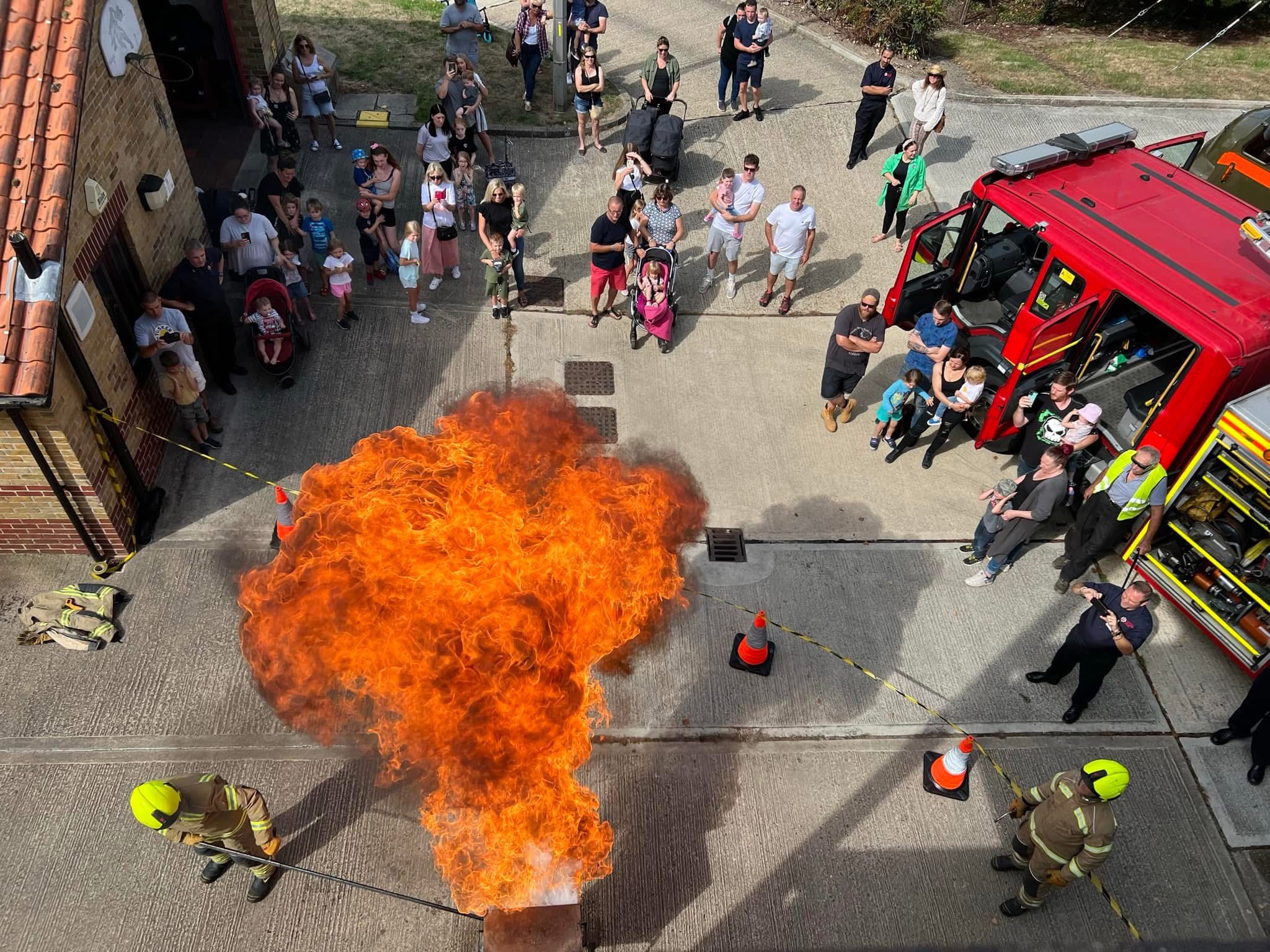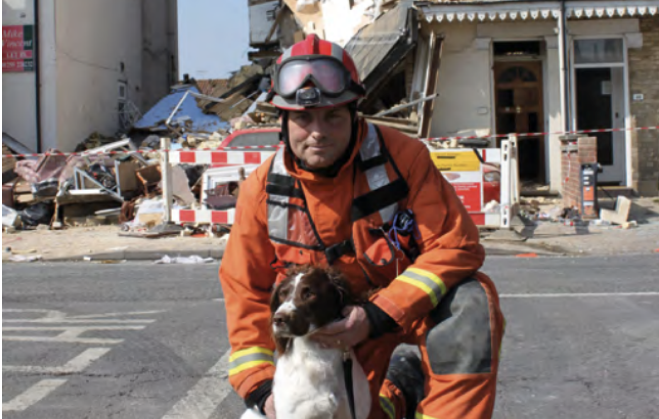A Biography of an Enthusiast
Born on 25 April 1867 to builder Charles and Harriet of Mildmay Road, Chelmsford, Frank Choat, like many of his contemporaries, developed an unquenchable enthusiasm for the unusual, in his case fire engines and in particular constructing them from old motor cars. He also was to become a prominent member of the West Essex Cycling and Athletic Club and was made secretary in 1895. It was his love of bicycles, not fire engines that would later prove to be his nemesis. Frank naturally followed in this father’s footsteps and became a prominent local builder and carpenter.
In 1916, as the privations of the Great War began to bite, the Chelmsford Borough Fire Brigade (CBFB), concerned about the availability of horses and horse feed, considered turning to petrol power to pull their two steam fire appliances. A number of brigades had already turned to powerful motor cars to act as tractor vehicles to pull their steam fire engines (steamers) instead of horses. The CBFB intended to run “tractor” feasibility trials and was pleased to learn that Frank was willing to lend his 28hp Daimler motor car to act as the tractor vehicle to pull one of the Brigade’s steamers. The date was set and a steamer was hitched to the back of his Daimler. The Daimler dutifully proceeded up Springfield Road and arrived at the Essex Police Headquarters within six minutes of leaving Market Road fire station. On it’s return it was met by the horse drawn escape which had left the fire station at the same time as a control to test performance of horse verses horse power. The horses had only managed to get to the Three Cups Public House at the bottom of Springfield Hill! The Daimler did not experience any difficulty cornering or climbing up Springfield Hill; consequently the Fire Brigade Committee (FBC) felt this form of propulsion would indeed be a realistic alternative to horses. Additionally they felt that it was a much better option to purchasing an expensive purpose-built motor fire appliance – an idea that was tabled at the previous committee meeting. On 10 March the FBC was dumbfounded to receive a bill from Mr Choat for his out-of-pocket expenses, amounting to £6 5s 0d, (approximately £380 today) which related to the use of his Daimler for the trial; after all it was thought that he had agreed to loan the Brigade his Daimler. He also stated that he was willing to hire his car to the Brigade for £2 per month; alternatively he would sell it to the CBFB for £110 (£6,700 today). This must have infuriated the FBC even further. The reply Mr Choat received was unambiguous informing him, in no uncertain terms, that he had volunteered his car to pull the fire engine and that no payment would be made, and that his offer to hire or sell the vehicle, would not be entertained! This rebuttal was put into perspective as it was about this time that Frank learned that one of his two sons Sapper Richard Frank Choat, Royal Engineers had been killed by a shell on the Somme on 29 July 1916. Richard’s body was lost and as such he is commemorated on the Thiepval Memorial.
Due to the war the equine problem intensified and in January 1918 the Brigade was compelled to purchase an 18/30hp French Panhard saloon car from Messrs Roslin of Springfield Road to pull the steamers. It was converted for that purpose at a total cost of £150, but not before the ever-willing Frank, once again offered his Daimler for hire, this time for £36 per annum which included maintenance costs. This new offer once more fell on stony ground!
In 1923 the Brigade considered purchasing a second tractor vehicle to supplement the Panhard. Lo and behold Frank popped up again, this time he made available to the Committee what was reported to be a Panhard saloon car suitable for conversion, in fact it was a Mercedes. On this occasion the FBC was more amenable and Frank was required to test it by driving it up Danbury Hill. It was found to be entirely satisfactory and purchase was recommended. With all the necessary alterations, including painting, lettering and two extra tyres, it was offered at the bargain price of £295. A Dennis pump (or similar) would be fitted to the vehicle for £150, and alterations to Market Road fire station would be undertaken for around £100, making the total bill for the ‘new’ fire engine - £545. By April 1923 Messrs Dennis had fitted a suitable pump plus hose and the deal was done. Frank’s persistency had paid off and he had now finally got his foot, metaphorically, on the Brigade’s ladder. In July, no doubt to the chagrin of a number of councillors, he triumphantly delivered the finished Mercedes (which also had the capacity to carry 2000 feet of hose) to the Brigade, and by all accounts it was ‘very satisfactory’. The acquisition of the Mercedes did not extinguish controversy. Councillor Williams, an ex-Serviceman, was aggrieved that a German vehicle [Mercedes] had been considered at all, ‘as the car had been made by people who killed Englishmen.’ (Chelmsford Chronicle, Friday 2 February 1923).
About this time that Frank joined the ranks of the CBFB, but still found time to make fire engines. He seemed to have his finger in every fire related pie. Not only did he provide fire engines to the CBFB, but he drove them and even submitted a successful tender of £22, 12s, which was highly competitive, to repaint the Market Road fire station in October 1925. In May 1924 he resigned as a motor driver stating that, ‘he cannot see his way to attend the necessary drills’. This apparent lack of enthusiasm did not deter the Brigade from offering Frank £5 to teach four new drivers how to drive the Brigade’s fire engines.
The next appliance to come off the Choat production line was in 1924 when he converted a high-powered Renault saloon car for the Great Burstead & Billericay Fire Brigade (see below) which the Brigade took over on 20 February 1925 the event being marked by suspending a bottle of wine over its bonnet which was ceremonially smashed by Mrs Muers using a fireman’s axe.
In June 1926 the CBFB’s chief officer was given the task of obtaining tenders for a new chassis and pump - effectively a new fire engine. Eight tenders quickly arrived and a sub committee was formed to arrange demonstrations of prospective new fire engines. Not to be outdone Frank pointed out, to the FBC, that he had a high-powered Renault saloon car available, in superb condition that he could convert into a fully kitted out fire engine for considerably less cost than other possible options. Unfortunately the Renault had not yet been converted and it was suggested that the Renault which Frank had supplied to Great Burstead/Billericay Fire Brigade be made available for the proposed demonstrations at the Recreation Ground later that November. This machine was a couple of years older than the one proposed for Chelmsford and was only capable of 40 mph, instead an impressive 60 mph which the ‘new’ Renault was said to be capable of. The day of the demonstrations arrived and the redoubtable Frank - notable local builder, volunteer member of the Brigade and constructor of fire appliances extraordinaire, optimistic as ever, pitted himself against the big boys of the fire engine world with his ‘Billericay’ Renault. His optimism was not generally shared by the FBC, they felt that the efficiency of his machine which was based on a 1913 45 hp chassis with a Dennis centrifugal pump and priced at £595, was questionable to say the least. Despite these reservations the Essex Chronicle noted that Frank’s machine, although less powerful than his rivals, did not disgrace itself, but a Dennis fire engine initially appeared to come out on top and Frank’s bid sadly went up in smoke.
Incredibly Frank’s old Panhard was still in operation in spring 1928, but it was not long before it was relegated to practice drills only and a replacement needed to be found. Frank, always keen to oblige, informed the FBC that he could supply a 1913 42hp Renault rolling chassis in superb condition with: a 250 to 300gpm centrifugal pump, a 30 gallon Minimax soda acid extinguisher, pneumatic tyres, electric lighting to five lamps, complete with a body similar to the Mercedes. The Renault would be painted and varnished, accordingly, all for a bargain price of £500. If this was too big a financial pill for the FBC to swallow, he could provide the same Renault fitted with the Panhard’s old Dennis pump and a Minimax soda acid extinguisher, for £280. Quite correctly the FBC resolved to invite tenders from fire engine manufacturers to supply a new machine. Unsurprisingly, Frank tabled his bid for the second-hand Renault, which differed slightly from his initial specification, namely: that the appliance would be able to carry 1000 feet of hose, plus eight firemen with boxes for equipment fixed to the running boards. It would be fitted with ladder supports, pneumatic tyres, plus a spare and the old Panhard’s Dennis pump would be refurbished and fitted. Painting and varnishing would naturally be included in the bargain price of £280. At the next committee meeting in October tenders were put forward for deliberation. The ever prudent FBC resolved to purchase Frank’s Renault but were determined that a new Dennis pump be factory fitted for an additional £175. It is quite possible – though not certain - that this Renault was the one previously trialled in 1926 at the Recreation Ground.
In the early thirties the Brigade met with an embarrassing incident. On Friday 3 January 1930 the Chelmsford Chronicle reported that on the previous Monday the Chelmsford Town Council had been informed by the CBFB’s captain that two fire engines had caught fire due to friction setting oil alight. Both the Choat-built Mercedes and Renault had ignited returning from a drill at Margaretting. Fortunately the damage was not serious and was soon rectified. The Renault got away with it unscathed but the Mercedes had to be repaired by Mr C Boreham at a cost of £9 5s. One can imagine Frank’s embarrassment when two of his machines ignited simultaneously.
The Chelmsford Chronicle noted on 2 June 1933 the Frank was at it again. He had offered to supply the Fire Brigade Committee with a 65hp Leyland fire engine. This machine was fitted with a turbine pump, a sliding carriage with a 55ft escape ladder. It was shod with new solid tyres and would be painted and varnished, to suit, and all that for £400 plus a generous part exchange allowance of £75 for the ageing Renault. Initially the FBC declined Frank’s kind offer, but after a healthy debate it decided to ‘refer back’ to see what the machine was capable of, (Chelmsford Chronicle, 2 June 1933). By 30 June the committee had indeed considered Frank’s offer. In the meantime he wrote to the FBC withdrawing his tender and offered the Leyland at the committee’s ‘own valuation’. Unfortunately for Frank the FBC had subsequently decided that a new and up-to-date wheeled escape ladder was the priority which could, quite easily be fitted to their existing Leyland thus averting the need for a new fire engine as originally tabled. This prompted the Mayor to sarcastically state that he would now value Mr Choat’s Leyland at £1, a proposal that engendered a good deal of mirth from his colleagues and no offer was submitted to Frank, (Chelmsford Chronicle, 30 June 1933). Not to be thwarted Frank’s penchant for fire engine refurbishment once more bore fruit when in November 1933 he supplied Burnham-on-Crouch with an early second-hand Leyland FE1 fire engine, previously owned by the Finchley Fire Brigade. This was possibly Frank’s final effort as there is no further reference to Frank making any more fire engines, but that is not to say he didn’t.
It has already been stated that Frank was a keen and very able cyclist. His passion for cycling was to prove to be his undoing. In December 1939 while cycling in Baddow Road, Chelmsford, he was accidentally knocked off his bicycle by a motor car. He was admitted to hospital suffering from severe cuts and bruises to his head, nevertheless he progressed ‘very nicely’ but it was a number of weeks before he was up and running again. It would seem that despite a favourable prognosis he never fully recovered from the accident. On 10 April 1942 the Chelmsford Chronicle reported the death of Frank on Good Friday at the age of 74. It reported that Frank had been in rude health until his accident which, ‘he seemingly had difficulty recovering from’. As a prominent member of the CBFB it is surprising that there did not seem to be an official representation from the Brigade at his funeral, or indeed the presence of a fire engine to carry his coffin.
There ended the life of a larger than life member of the CBFB who gained prominence, not necessarily for his firefighting ability, but for his practical skills including the ability to convert ageing motor vehicles into robust fire engines that benefitted not only his pocket but the pockets of a number of Essex fire brigades. Good on you Frank!
All Fired Up’ is a series of articles written by our Museum volunteers about the history of the fire service in Essex.
Volunteers spend many hours researching the collection, often uncovering untold stories and finding interesting facts that would otherwise be lost.
To share these invaluable snippets of history with you we are making some of this research available. Read the full list here.


